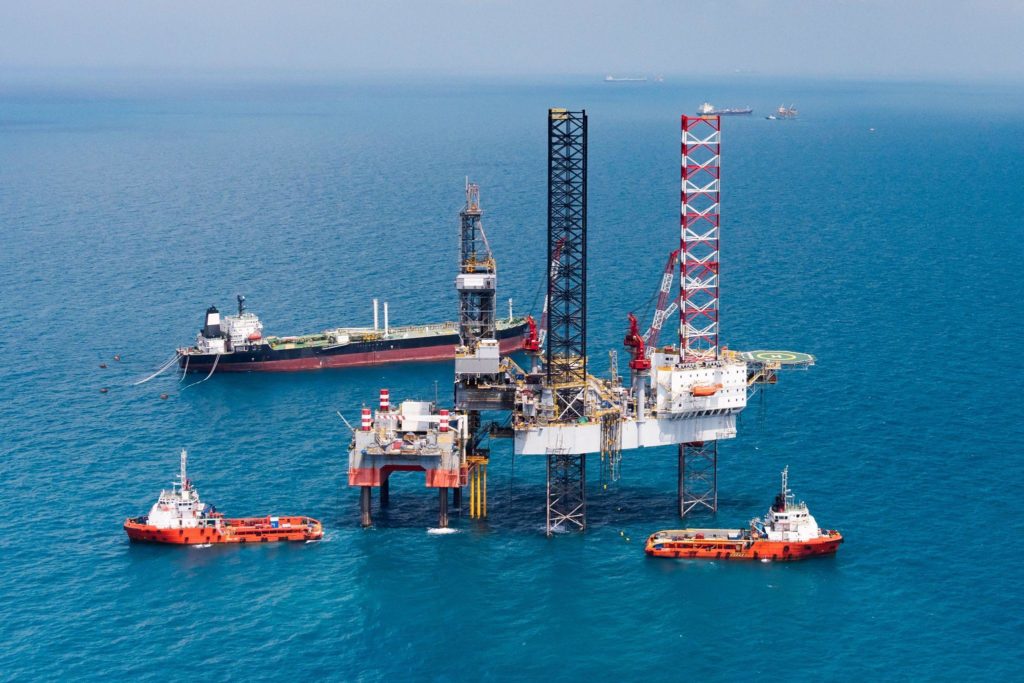Offshore Accidents
Over $1 Billion RECOVERED For Maritime Accident Victims
Oil Rig Workers: High Risk of Injury
It’s no secret that oil rig workers spend their days in highly dangerous conditions—in fact, this is easily one of the most dangerous occupations in America. According to the Washington Post, personnel in the gas and oil industry are about seven times more likely to be killed on the job than the average workman.1

Even so, the general public isn’t fully aware of the extent to which these hardy workers place themselves in bodily danger on a daily basis. On an oil rig, hazards come in a variety of shapes and sizes. What’s more, these threats can develop with alarming swiftness, placing personnel in a life-and-death situation in the blink of an eye.
If all that weren’t bad enough, oil rig workers often find little support from their supervisors and bosses, who frequently decline to report on-site injuries or safety lapses for fear of incurring the wrath of regulators. Many employees understandably believe that they may be reprimanded or even fired for complaining about on-the-job hazards. As a result, unsafe conditions can persist needlessly, until a major incident develops.
Let’s take a closer look at the ways that oil rig personnel can—and, tragically, sometimes do—become seriously harmed or even killed while on the job.
Explosions
An explosion is one of the most lethal types of accidents that can occur on an oil rig. Luckily, it’s a fairly uncommon occurrence but it does happen. In a lot of these incidents, evident safety hazards were tragically overlooked until it was too late.
That was true for the infamous Deepwater Horizon incident on April 20, 2010, which resulted in the deaths of eleven men, as well as untold environmental damage as several million barrels of oil were dumped into the Gulf of Mexico. The explosion was caused by a sudden surge of natural gas through the concrete core of the oil well.
Explosions can lead to major repercussions beyond the initial impact of the blast. When an explosion occurs on an oil rig, it can easily ignite gas and chemicals in the area, sometimes sparking a huge conflagration that endangers the lives of everyone on the premises. Due to the presence of highly flammable materials on oil rigs, this sort of incident is always a possibility that any on-site safety plan must account for.
Falling
Oil rig workers can spend a significant portion of their shift way up in the air, on elevated platforms or other raised surfaces. For obvious reasons, this is a risky practice. Harnesses and related safety gear can help ensure a reasonable level of safety for personnel who must work under these conditions, but equipment failure and plain old mistakes still leave them vulnerable to harm.
The presence of chemicals on normal walking surfaces also poses a safety risk, and it’s easy for harried personnel to overlook the need to clean these up promptly. Worn-out guardrails and unmarked floor openings also create potential problems. A simple fall on an oil rig can cause severe injuries.
There’s another type of falling hazard: heavy objects dropping from overhead. Personnel can sustain major head injuries from wrenches, chains, and other bulky objects that haven’t been secured properly. That explains why the use of hardhats is standard in these environments—but, again, this is hardly a foolproof solution.
Dangerous Machinery
The kind of equipment used in these environments must extract, handle, and transport oil from deep in the earth, or provide valuable support to these activities. Oil rig workers often walk around platforms where heavy chains dangle just over their heads, where bulky materials must be loaded and unloaded, and where powerful pumps and compressors operate without regard for the safety of the human beings around them.
This is heavy-duty machinery, and anyone around it must exercise extreme caution at all times. They also should wear appropriate safety gear, such as earplugs (oil rig machinery can be extremely noisy), hardhats, and gloves.
Even with reasonable precautions, however, accidents do happen. Often it can be attributed to simple negligence on the part of the injured individual(s), but this is not always the case. Improperly maintained equipment may function incorrectly or even experience a sudden catastrophic failure, causing serious harm to personnel in the area.
Because oil rigs are usually in operation on a 24/7 basis, it’s a simple matter for supervisors to find an excuse to push back routine maintenance and inspections to a more convenient date, or ignore these issues altogether. Consequently, minor mechanical problems that ordinarily could be easily managed may eventually develop into major problems.
Dangerous Chemicals
Another serious health risk on oil rigs stems from all the toxic chemicals in the air due to the activities of drilling and processing machinery. Among these hazardous chemicals that commonly pollute the atmosphere in oil rigs is hydrogen sulfide, a flammable heavier-than-air gas that can trigger multiple health issues, especially relating to the central nervous system, in individuals who are exposed to it over long periods of time.
Exposure to hydrogen sulfide in high concentrations can lead to immediate loss of consciousness and death.
Aside from hydrogen sulfide, other types of potentially dangerous chemicals are often present in the form of fumes emitted by machinery; these can irritate the eyes and/or burn the skin. For personnel in these environments, it is standard practice to wear face and eye protection but the threat is always present.
Isolation
A lot of oil rig workers spend long days hundreds of miles from the nearest coastline. That in itself poses no particular danger—it’s just part of the job—but what happens when a serious safety hazard develops on the rig, like a fire breaking out? The safety risk associated with these incidents is compounded by the fact that oil rig personnel are in an environment that cannot be easily or quickly reached by emergency response teams.
Fatigue
Oil rig personnel can make a good wage, but there’s no doubt that they earn their pay. Many workers have to endure shifts that last twelve hours—and sometimes as long as eighteen or even twenty-four hours. Working twelve hours shifts for weeks at a time isn’t uncommon in this industry.
When you consider that these employees usually have to do their jobs not in comfortable air-conditioned offices but in hazardous conditions, and in frequently uncomfortable weather, then it’s hardly a mystery why this line of work rarely attracts couch potatoes. It’s an undeniably tough job.
Oil rig workers have to keep going well after the point where most of us have decided to call it a day and relax in front of the TV or laptop. What this means is that oil rig personnel can make serious errors as their shifts drag on and fatigue increases. Tired workers just aren’t as alert or as effective as they should be. In this type of environment, simple errors may lead to major—even life-threatening—consequences.
If You Need Help After an Injury
If you’ve been seriously injured as a result of an accident on an oil rig, you should reach out to the Maintenance and Cure team at Schechter, Shaffer & Harris, L.L.P., to ensure that you have access to first-rate legal representation. We have many years of experience with all aspects of maritime law, including the Jones Act, DOHSA, LHWCA, Public Vessels Act, Maintenance and Cure, Maritime Piracy, Admiralty Extension Act, Military Sealift Command, and OCSLA. Our team has won millions of dollars in settlements for our clients, and we would be happy to hear from you. Contact us at your earliest convenience for a free confidential case evaluation.
Source
- https://www.washingtonpost.com/wp-dyn/content/article/2010/08/09/AR2010080904083.html
Companies We’ve Taken On And Won
Featured In:
News Outlets and Professional Awards

Free Case Evaluation
No Obligation, In-Depth Case Review












